A sand making plant is a facility designed for producing artificial sand and aggregates. It uses equipment like crushers and screens to transform raw materials such as granite, river pebbles, and limestone into sand with specific size requirements.
With the decrease in natural sand resources and stricter environmental regulations, artificial sand has become an ideal alternative. Sand making plants have become essential to meet market demand.
How does a sand plant produce sand?
The output of these plants includes both stone aggregates and manufactured sand, which is why they are also called aggregate production lines.
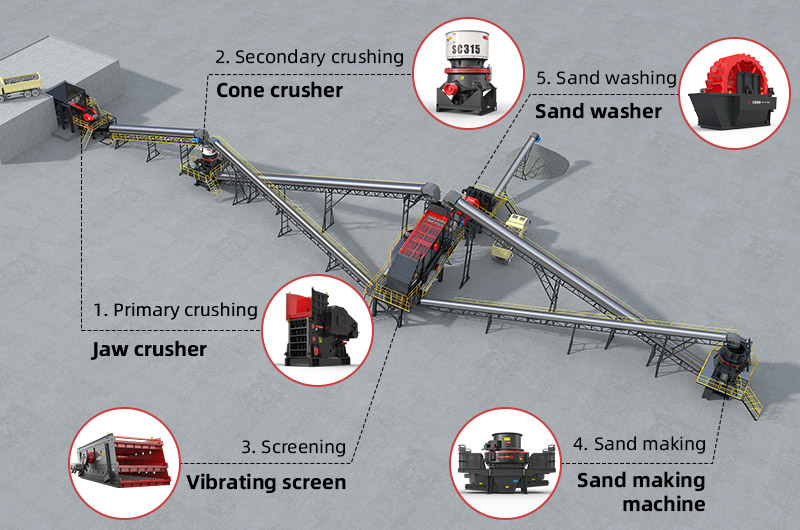
A complete sand making line typically involves four stages: crushing (primary and secondary), fine crushing and sand making, screening, and sand washing. Each stage is interconnected to ensure efficient production and high-quality output.
1. Crushing (Primary and Secondary)
Raw materials are fed evenly into a jaw crusher through a vibrating feeder for initial crushing, turning large stones into medium-sized pieces. The coarse material is then conveyed to a cone crusher (or impact crusher) for secondary crushing.
2. Fine crushing and sand making
The medium-sized stones are sent to the sand making machine for further crushing, creating sand that meets the required specifications. This is the core stage of sand production, affecting the size and shape of the final sand product.
3. Screening
The crushed sand is sorted using a vibrating screen, which separates sand that meets the required size specifications from those that do not. Any material that doesn't meet the standards is sent back for further crushing. This step ensures consistency in the size of the final sand product.
4. Sand washing
The screened sand is cleaned using a sand washer, removing any remaining soil, dust, and impurities, which improves the cleanliness of the sand. This step ensures the purity of the final sand, making it more suitable for construction use.
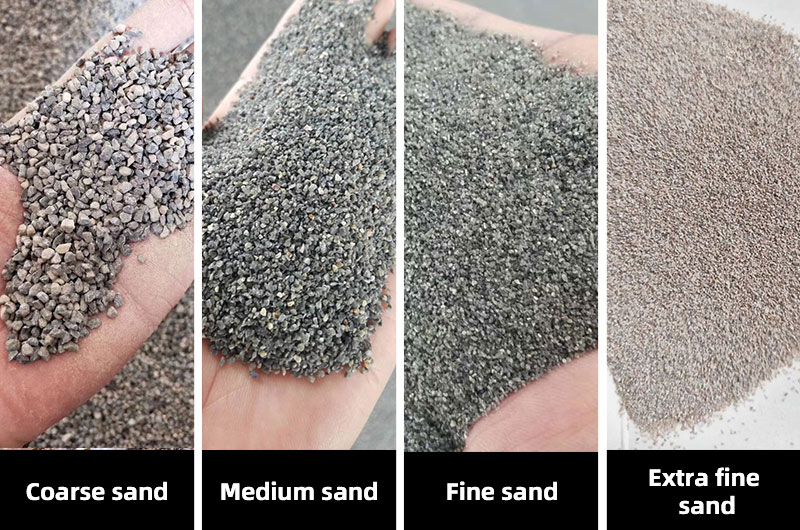
The sand produced by the sand making plant has different particle sizes. The following are some common finished sand specifications:
- Coarse sand: 0.5 mm–1 mm
- Medium sand: 0.25 mm–0.5 mm
- Fine sand: 0.125 mm–0.25 mm (125 μm–250 μm)
- Extra fine sand: 0.0625 mm–0.125 mm (62.5 μm–125 μm)
FTM Machinery customized sand making plant solutions
As a manufacturer of sand making equipment, FTM Machinery specializes in designing customized sand production lines for various materials, such as granite sand production lines, basalt sand production lines, and limestone sand production lines.
Here are some successful examples of sand making plants we have designed for our clients:
1. Kenya 180-230 tph pebble sand making plant

- Project type: Hard rock pebble sand making
- Production capacity: 180–230 t/h
- Feed size: 300 mm–500 mm
- Output sizes: 0 mm–5 mm, 5 mm–20 mm, and 20 mm–40 mm
This sand making line is specifically designed to handle high-hardness river pebbles, offering significant advantages such as high automation and low operating costs.
During the sand production process, the output size is uniform, and the rate of stone powder generation is low, all while meeting strict environmental standards. These features contribute to a short return on investment, allowing clients to quickly recoup costs and continue to profit.
Main equipment configuration:
| Equipment | Model | Quantity |
| Jaw crusher | HD86(69) | 1 |
| Cone crusher | SC315 | 1 |
| Sand maker | HVI0922 | 1 |
| Wheel sand washer | 3220 | 1 |
| Vibrating feeder | GZD-1100×3600 | 1 |
| Vibrating screen | 2YK2160,3YK2160 | 1 each |
Sand production process:
- 1Vibrating feeding: The GZD-1100×3600 vibrating feeder evenly delivers 300 mm–500 mm pebbles to the HD86(69) jaw crusher.
- 2Primary crushing: The jaw crusher reduces the size of the pebbles to below 150 mm.
- 3Secondary crushing: The crushed material is sent to the SC315 cone crusher for further reduction to 30 mm.
- 4Sand processing: The processed material is then refined by the HVI0922 sand maker to produce uniformly sized manufactured sand.
- 5Screening and classification: The 2YK2160 and 3YK2160 vibrating screens classify the manufactured sand into three specifications.
- 6Sand washing: The 3220 wheel sand washer cleans the manufactured sand, removing impurities to enhance the cleanliness and quality of the final product.
2. Nigeria 800tph limestone sand making plant
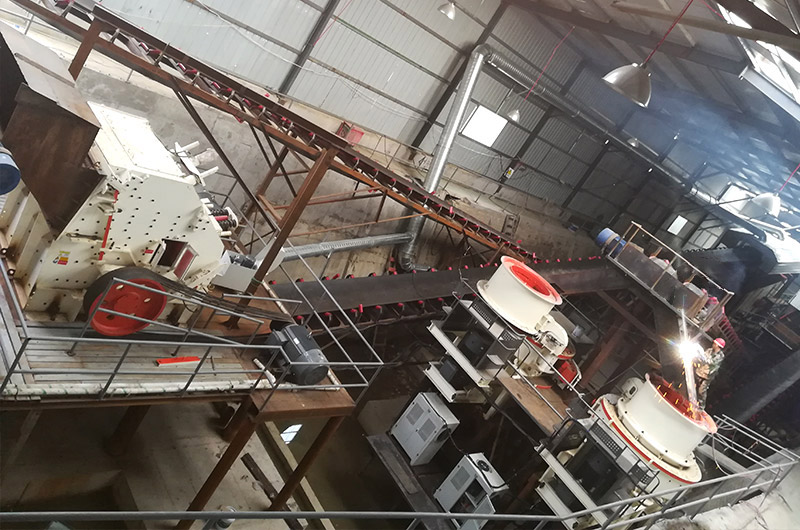
- Project type: Soft rock limestone sand making
- Production capacity: 800 t/h
- Feed size: 200 mm–900 mm
- Output sizes: 0 mm–5 mm, 5 mm–10 mm, 10 mm–15 mm, 15 mm–25 mm
This sand production line boasts a large processing capacity and a high crushing ratio, producing cubical sand and gravel with a low content of flaky particles.
FTM Machinery provided a complete set of process design, on-site measurement, installation guidance, and technical support for this project, ensuring the production line operates efficiently and stably.
Equipment configuration:
| Equipment | Model | Quantity |
| Jaw crusher | PE1200×1500 | 1 |
| Impact crusher | PF-1320 | 3 |
| Sand maker | VSI 1140 | 2 |
| Spiral sand washer | 2LX-1115 | 4 |
| Vibrating feeder | GZD-1500×3600 | 1 |
| Vibrating screen | 4YK2160 | 6 |
If you are interested in learning more about sand production solutions, feel free to click for online consultation. Our professional engineers will customize a plan for you at no charge, helping you save costs and increase profits. Contact us now!
What equipment does a sand making plant need?
Main equipment list for sand making plant:
- Jaw crusher
- Cone crusher
- Impact crusher
- Sand maker
- Sand washer
- Vibrating feeder
- Vibrating screen
- Belt conveyor
1. Crushing equipment Get a Quote
Crushing is an essential part of the sand making process, typically divided into two stages: primary crushing and secondary crushing.
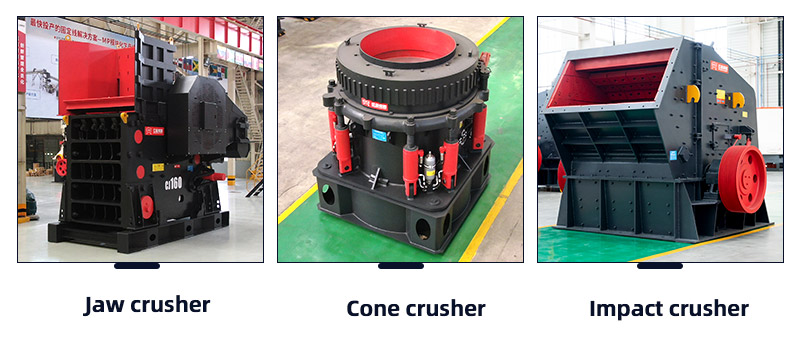
- Primary crushing: The jaw crusher is mainly used for primary crushing, breaking large hard materials like granite and river pebbles into medium-sized stones.
- Secondary crushing: The cone crusher or impact crusher is responsible for secondary crushing, further reducing the size of the stones to approximately 30 mm. The cone crusher is suitable for hard rocks, while the impact crusher is better for soft stones.
In sand and gravel production, an excessive amount of flaky particles is considered substandard. FTM Machinery's jaw, cone, and impact crushers efficiently crush and control flaky particle content, ensuring the finished product meets quality standards.
2. Sand making equipment Get a Quote
The sand maker is the core equipment of the sand making plant. FTM Machinery sales various models of sand making equipment, including both large and small sand makers to meet different production scale needs.
Large sand making machines for sale
Large sand makers are ideal for high-capacity projects, including HVI sand making machine, VSI sand making machine, and mobile sand making machine.
a) HVI Sand Making Machine
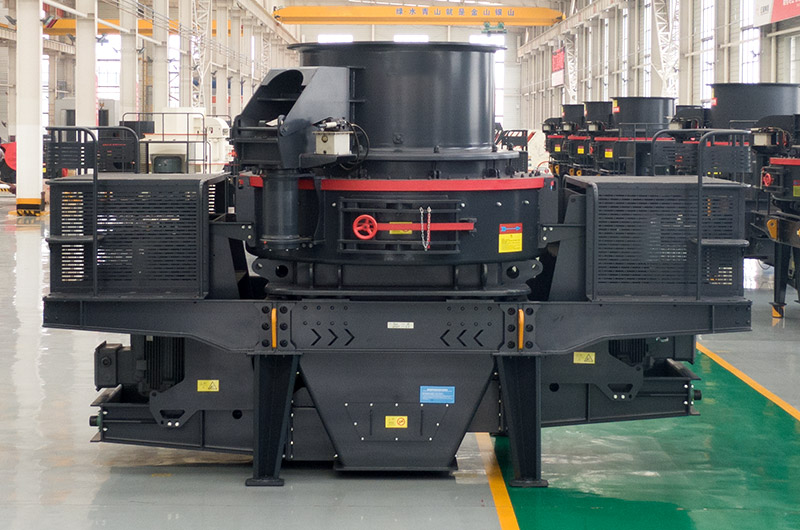
The HVI sand maker is an advanced upgrade of traditional sand making equipment, combining sand making and shaping functions with a high level of automation.
Its four-port impeller design increases material throughput by 30%, and the reversible wear plates effectively extend the equipment's lifespan while reducing operating costs by 30%. The hydraulic cover lifting device also simplifies maintenance and saves downtime.
- Applicable materials: Soft, medium-hard, and hard ores with a hardness of up to 320 MPa.
- Maximum feed size: Hard materials < 50 mm, soft materials < 55 mm
- Production capacity: Sand production capacity of 90–585 t/h; shaping sand capacity of 50–498 t/h.
b) VSI Sand Making Machine
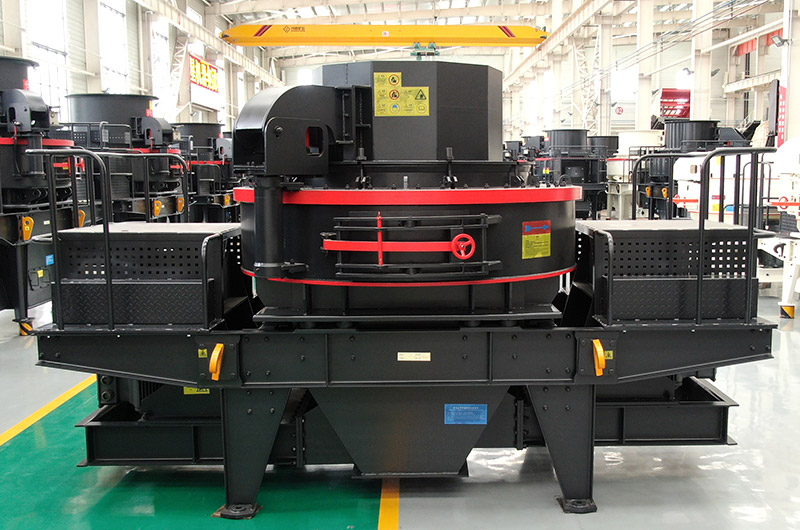
The VSI sand maker uses both "stone-on-stone" and "stone-on-iron" working modes, making it suitable for a variety of materials with different hardness levels.
Although the VSI sand maker is not as advanced as the HVI sand maker, it is more affordable and suitable for customers with limited budget. Under similar conditions, its production capacity exceeds that of the HVI sand maker by 10%, making it more widely used in various sand making plants.
- Applicable materials: Medium-hard and hard materials.
- Maximum feed size: Hard materials < 45 mm, soft materials < 50 mm
- Production capacity: Center feed of 40–365 t/h; combined center and side feed of 80–650 t/h.
c) Mobile Sand Making Machine
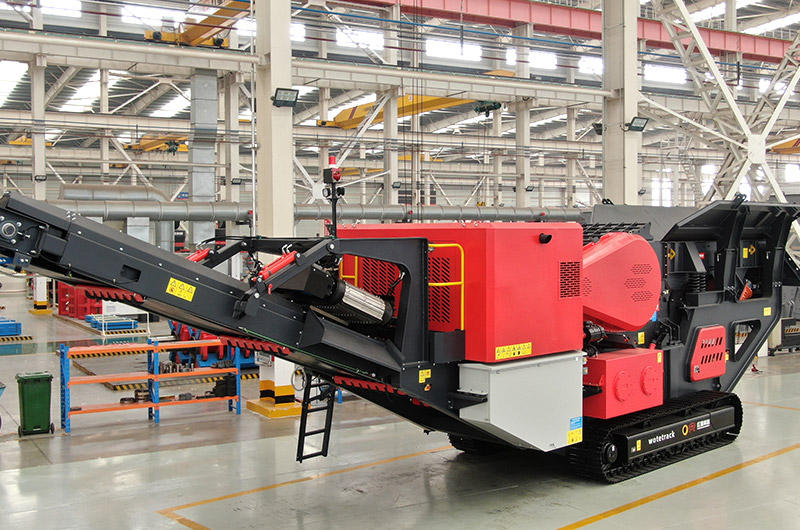
The mobile sand maker is a versatile piece of equipment that combines mobility with sand making capabilities. It can be configured as either a wheeled or tracked sand maker, suitable for various environments.
This machine can save a lot of costs associated with infrastructure, labor, and material transportation. It is an ideal choice for clients needing mobile operations or multi-site projects.
- Applicable scenarios: Sand and gravel production, mining operations, and construction waste processing.
- Feed size: < 60 mm
- Production capacity: Center feed of 40–365 t/h; combined center and side feed of 80–650 t/h.
Small sand making machines for sale
Small sand making machines are suitable for medium and small production projects. They include roller crushers, fine crushers, small hammer crushers, and compound crushers, making them ideal choices for startups and users on a budget.
a) Roller Crusher
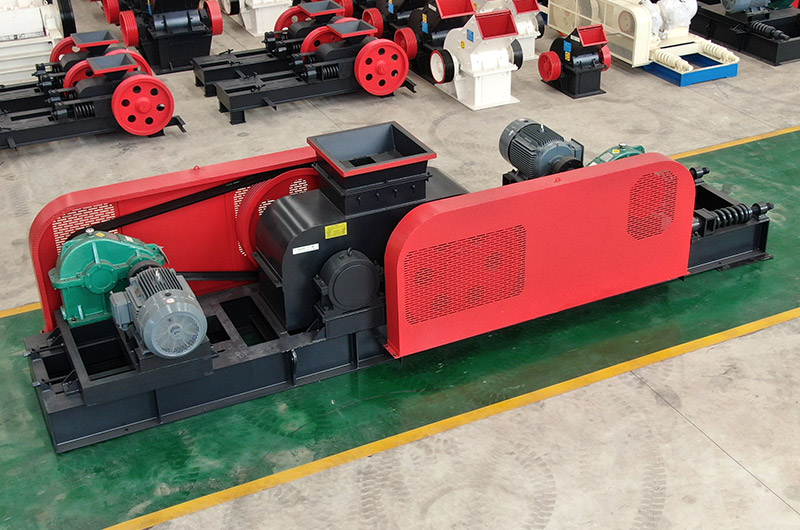
The roller crusher is small, simple in structure, and low in price. It is widely used in small sand making projects, meeting daily sand production needs and helping users achieve stable output with low investment.
- Suitable materials: Medium-hard, damp materials for crushing and sand making.
- Feed size: ≤ 30 mm
- Output size: 2 mm–10 mm
- Production capacity: 3–110 t/h
b) Fine Crusher
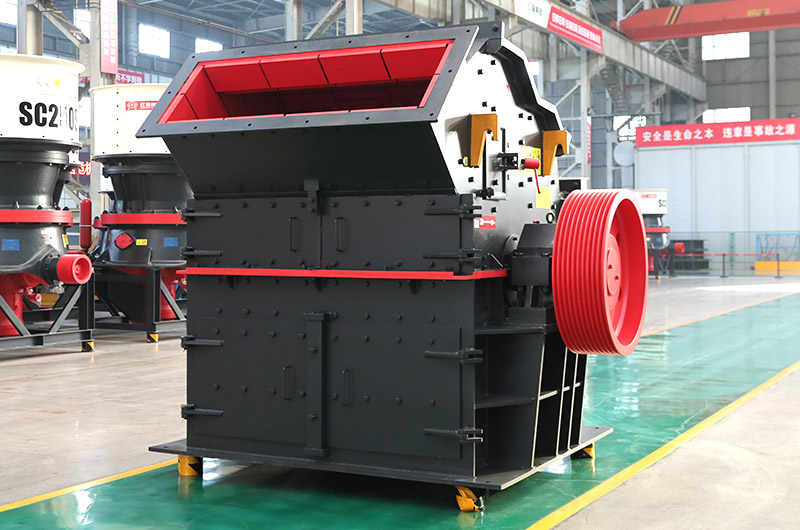
The fine crusher uses 50% less energy than traditional machines and provides better sand output. Its investment and long-term maintenance costs are 35%–50% lower than traditional methods.
It has a simple structure and streamlined process, making maintenance easier. It is perfect for small to medium sand production lines.
- Suitable materials: Brittle materials with hardness below 9 for fine crushing.
- Output size: 1 mm–8 mm
- Production capacity: 5–260 t/h
c) Other Small Sand Making Equipment
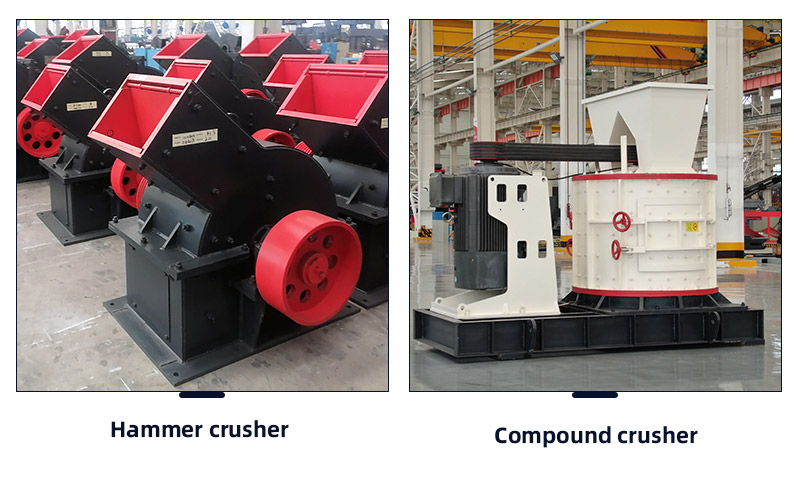
FTM Machinery also offers small hammer crushers and compound crushers, which are also suitable for sand making projects. They have a high crushing ratio and a large feed range, producing small, uniform sand particles with a cubic shape and reducing over-crushing.
How to choose the right sand making machine?
- High capacity needs: Choose HVI sand making machines or VSI sand making machines for efficient production.
- Low capacity and budget: Roller crushers and fine crushers are ideal choices with low investment and quick returns.
- Large feed size: Small hammer crushers or compound crushers are suitable for handling larger materials.
- Multiple site mobility: Mobile sand making machines are flexible and suitable for various construction sites.
3. Sand washing equipment Get a Quote
Sand washing machine is a key auxiliary machine in sand making and washing production lines. It is used to clean and remove dirt, dust, and other impurities from manufactured sand.
The most commonly used sand washing equipment in sand plants includes wheel washers and spiral washers.
a) Wheel Sand Washer
The wheel sand washer is suitable for cleaning fine and medium-sized materials and is commonly found in small to medium sand plants.
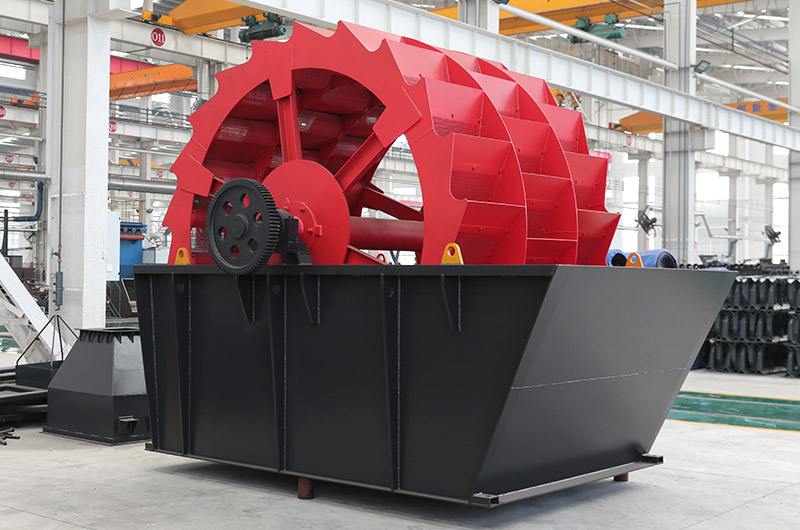
Features:
- Simple structure, easy maintenance, and high water utilization.
- Low water consumption, strong processing capacity, and clean output.
- Minimal sand loss, making it suitable for projects with less strict sand quality requirements, and it takes up relatively little space.
b) Spiral Sand Washer
The spiral sand washer is suitable for cleaning larger-sized materials or materials with more impurities, and it is typically used in large sand production lines.
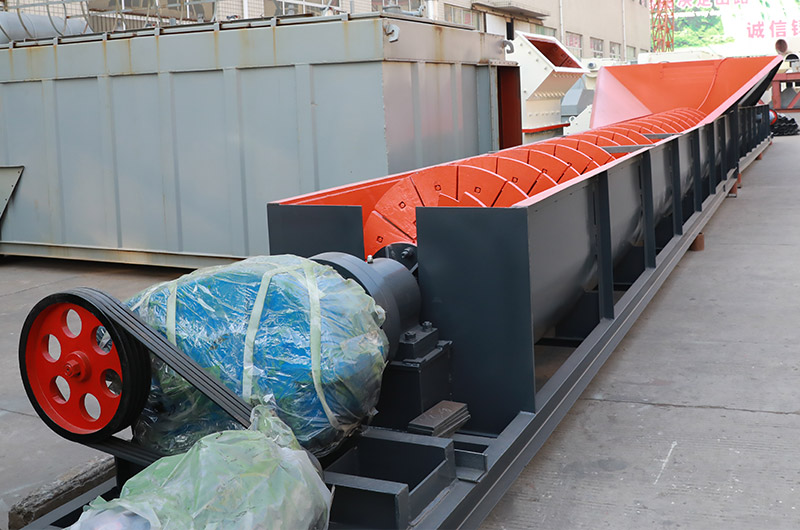
Features:
- Spiral design allows for a large processing capacity and excellent cleaning results.
- It has a grading function to control sand particle size, improving the quality of the sand.
- Although it has higher sand loss, it provides a more thorough cleaning, resulting in better product quality, but it takes up more space.
FAQs
1. How much does a sand making machine cost?
- The price of a sand making machine depends on several factors, including:
- a) Type of equipment: Different types of sand making machines have different working principles and functions, leading to significant price differences.
- b) Production capacity: The production capacity of the machine is an important factor affecting the price. Generally, a higher capacity means a higher price.
- c) Brand and quality: Well-known brands often provide better quality, after-sales service, and technical support, so their machines may cost more than lesser-known brands.
- d) Configuration and additional features: Some machines may come with advanced automation systems or wear-resistant parts, which can also affect the overall price.
2. How to maintain and care for sand making machine?
- a. Monitor operating conditions
- When the discharge equipment stops, feeding should also stop immediately to avoid damaging the impeller or burning out the motor.
- b. Feed materials evenly
- The size of materials fed into the machine should follow the specified requirements. Avoid feeding oversized particles to prevent imbalance, excessive wear, or clogging.
- c. Regular inspections
- Check key components like hammers and screens for wear or damage, and ensure that fasteners are securely tightened.
- d. Clean the equipment
- Regularly clean dust from the machine body and inside parts. Keep the feed opening clear to maintain efficiency.
- e. Lubrication system checks
- Regularly check if there is enough lubricant and change it on time. Good lubrication directly affects the machine’s lifespan and operating efficiency, so ensure that the lubricating oil is clean and well-sealed.

